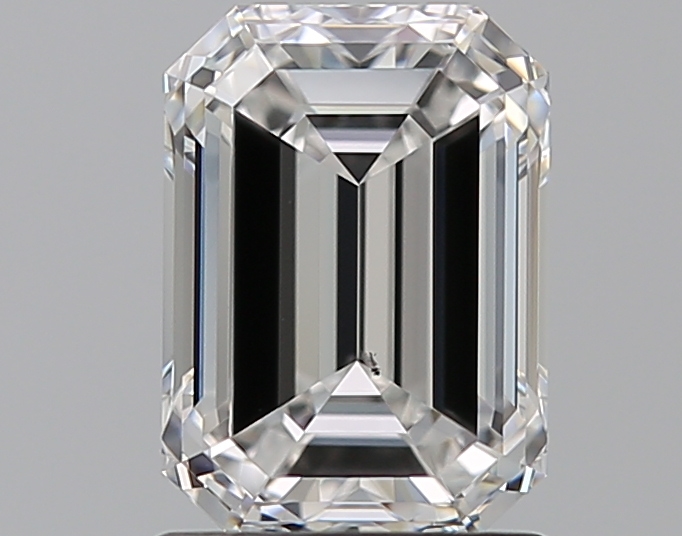A step cut is a style of diamond cutting that creates a distinctive look with rows or steps of elongated facets. These facets run parallel to the girdle of the diamond on both the crown (the upper portion) and the pavilion (the lower portion). The step cut is known for its classic, elegant appearance and is often used in diamonds with larger surface areas.
Key Features of Step Cut Diamonds:
Faceting Style: The defining characteristic of the step cut is the linear arrangement of facets, which resemble steps or rows. These elongated facets create a staircase-like effect, with the facets running parallel to the girdle of the diamond. This cut contrasts with the brilliant cut, which features numerous triangular and kite-shaped facets to reflect light in a more dynamic way.
Popular Step Cuts: Two of the most famous step cut diamond shapes are the emerald cut and the baguette cut:
Emerald Cut: The emerald cut is a rectangular or square-shaped diamond with cut corners. It features large, rectangular facets that showcase the diamond’s clarity and colour. The emerald cut is known for its elegant, understated beauty.
Baguette Cut: Typically smaller and more elongated, the baguette cut features long, rectangular facets and is often used as an accent stone or in vintage-style jewellery.
Facets and Symmetry: In a step cut, the facets are typically rectangular and arranged in a way that each one is aligned with the others, creating a step-like appearance. These facets are often fewer in number than those found in brilliant cuts, which gives step-cut diamonds a more minimalist and elegant appearance.
Clarity Emphasis: Step cuts, particularly the emerald cut, are often chosen for diamonds with high clarity because they showcase internal inclusions more prominently than a round brilliant cut. The large, flat facets on step-cut diamonds allow for a clearer view into the diamond, making it important to choose a stone with minimal visible flaws for the best visual appeal.
Light Reflection: Unlike brilliant cuts, which are designed to reflect light in many directions to create sparkle, the step cut focuses on creating a more subdued, reflective appearance. The large facets reflect light in a more linear way, and while step-cut diamonds might not have the same intense sparkle as a round brilliant cut, they often display a unique glow that comes from the reflection of light off their smooth, flat surfaces. This makes step-cut diamonds more suited for those who appreciate elegance and clarity over sparkle.
Advantages of Step Cut Diamonds:
Clarity Visibility: Step cuts are perfect for diamonds with excellent clarity because they allow you to see the diamond’s interior more clearly. This cut tends to highlight a diamond’s cleanliness and colour.
Sophisticated and Timeless: The elegant, understated look of step-cut diamonds makes them a favourite choice for those who prefer a more classic and timeless design. They often lend themselves to vintage-style or art-deco designs.
Better for Larger Stones: Step cuts tend to work well with larger diamonds because they allow the stone’s size to be appreciated without excessive light dispersion, which can make smaller diamonds appear less impressive. The open facet structure in step cuts can give larger diamonds a cleaner and more sophisticated appearance.
Disadvantages of Step Cut Diamonds:
Less Sparkle: While step-cut diamonds still possess beauty and brilliance, they do not reflect light in the same way that brilliant-cut diamonds do. The less intense sparkle can make them less desirable for those who prefer the flashy brilliance associated with modern cuts.
Visibility of Inclusions: Step cuts can make internal inclusions or imperfections more visible due to the large, open facets. Therefore, diamonds with higher clarity are preferred for step-cut styles to avoid any noticeable flaws.
The step cut is a refined and elegant diamond cutting style that emphasises clarity and colour over intense sparkle. With its distinct rows of elongated facets running parallel to the girdle, step-cut diamonds (like the emerald and baguette cuts) offer a timeless aesthetic that appeals to those seeking sophistication and simplicity. This cut is particularly well-suited for larger diamonds and stones with high clarity, and while it may not produce the same level of sparkle as a brilliant cut, it offers a unique, understated beauty that is highly valued in vintage and classic jewellery designs.

